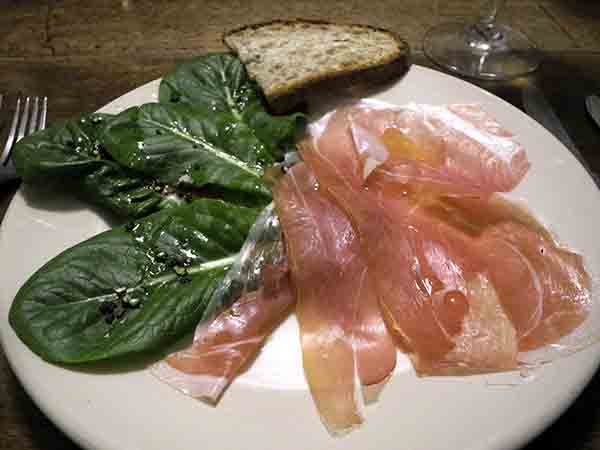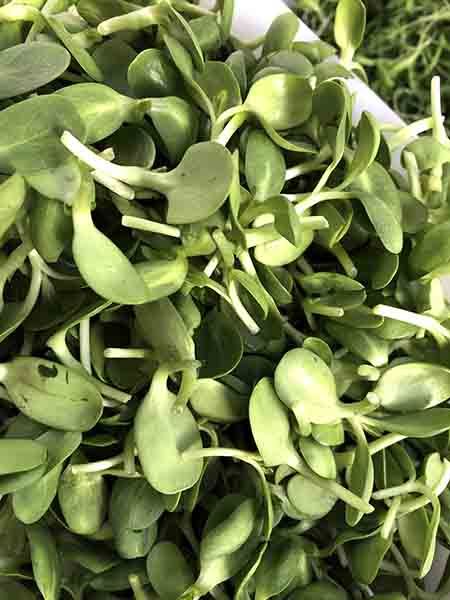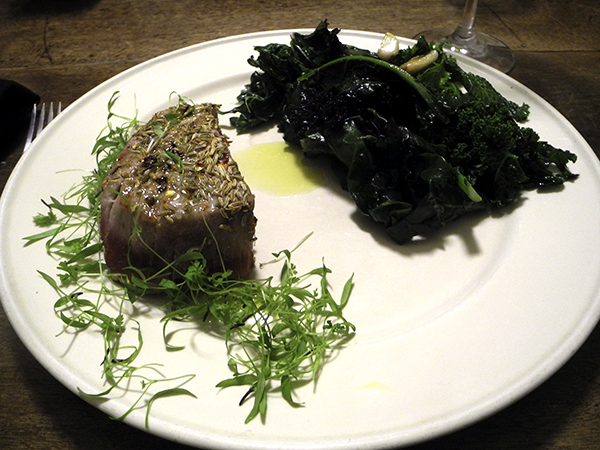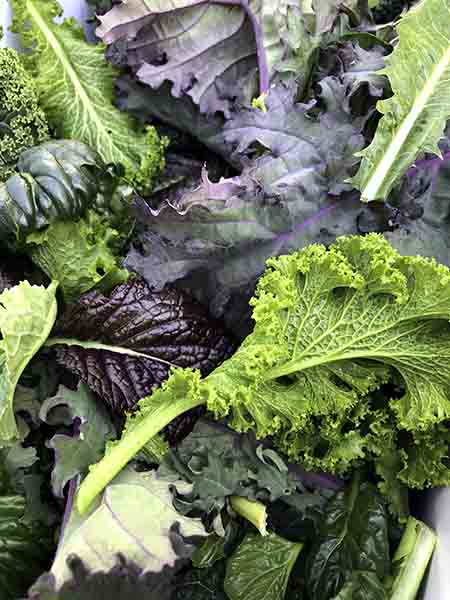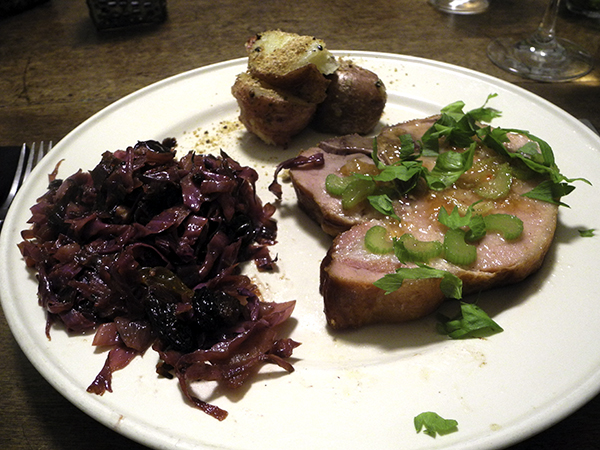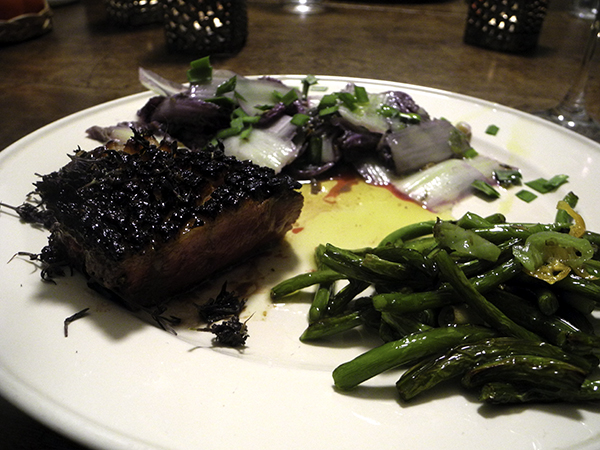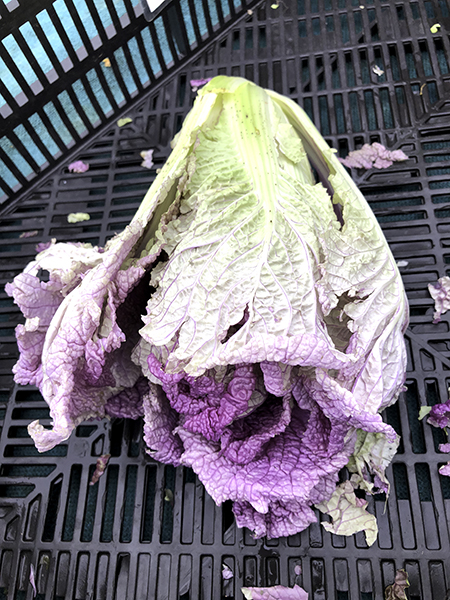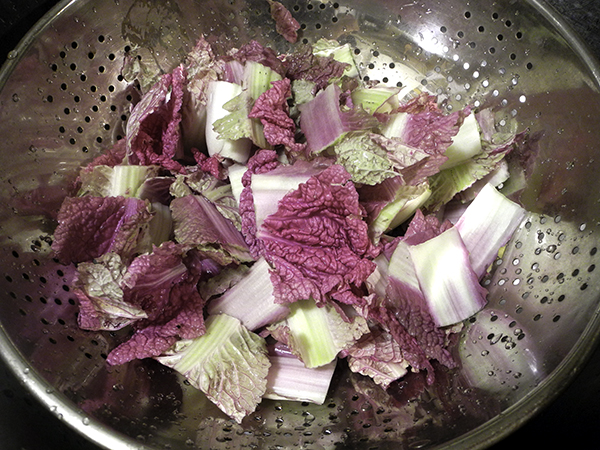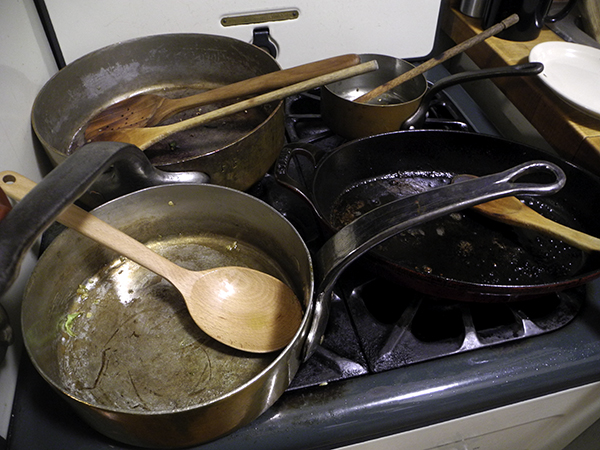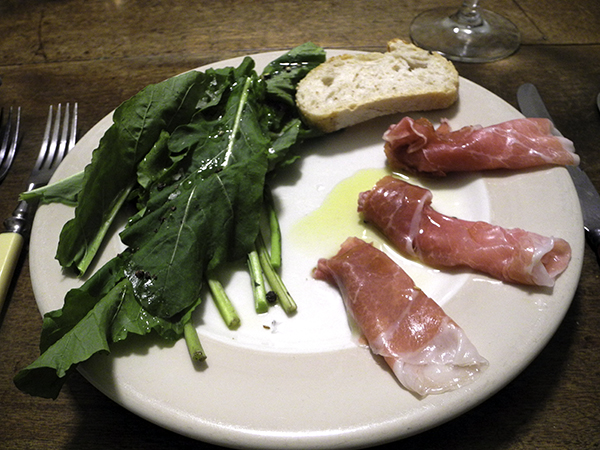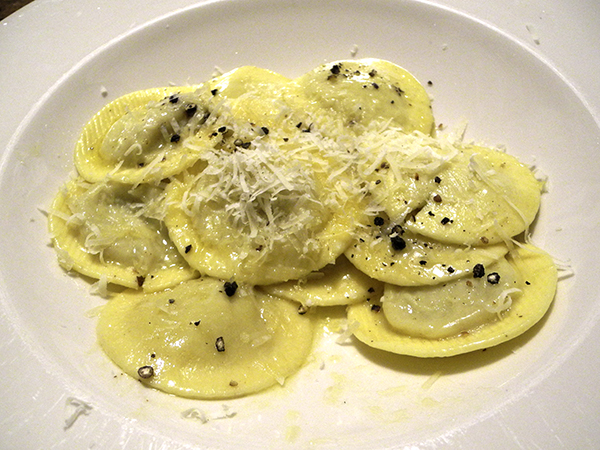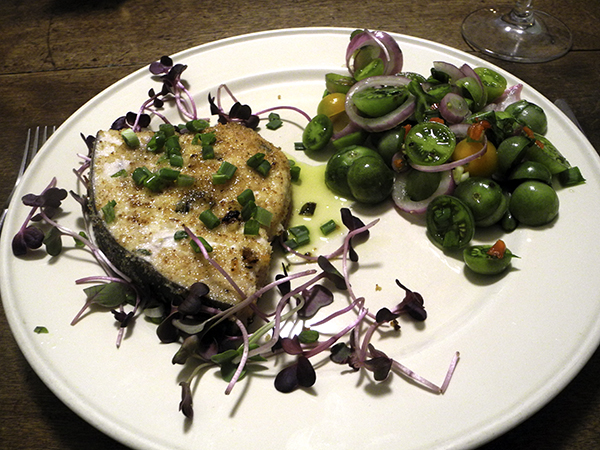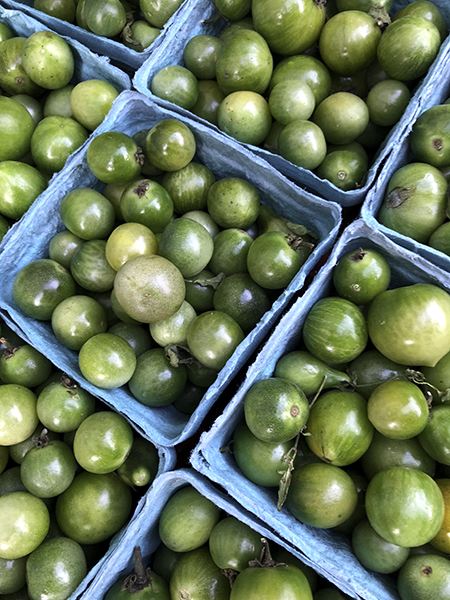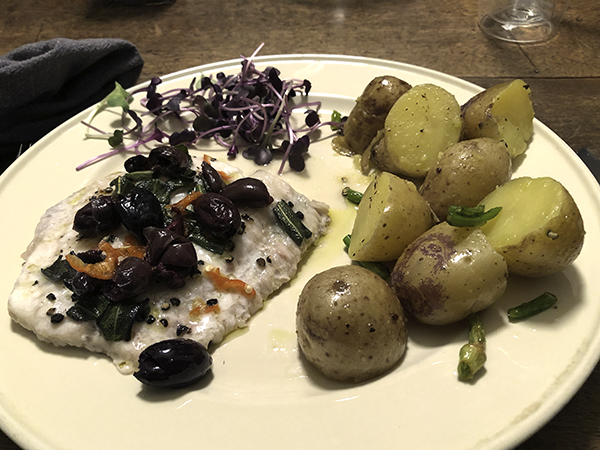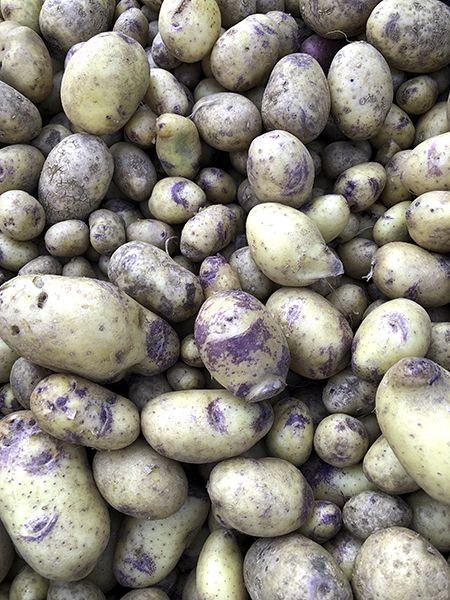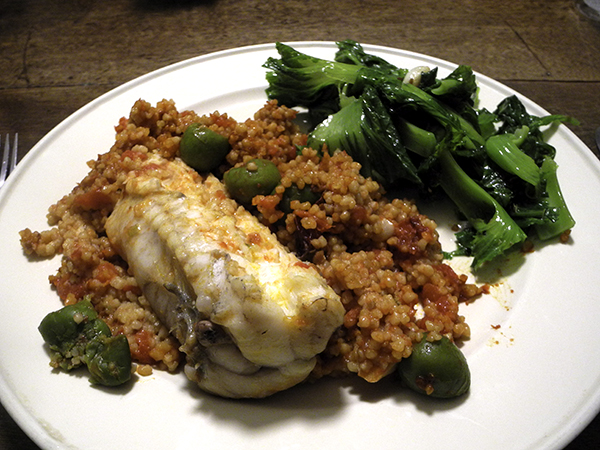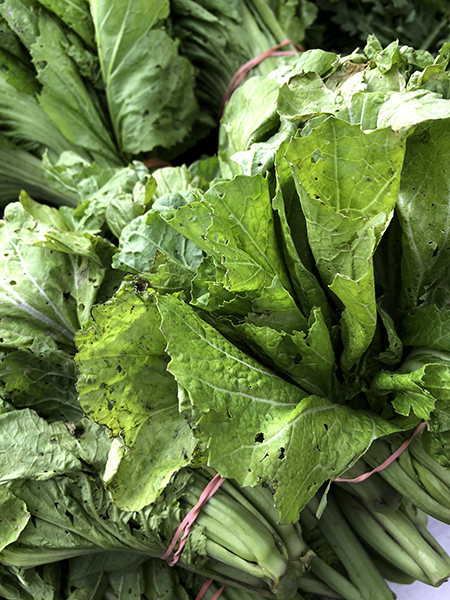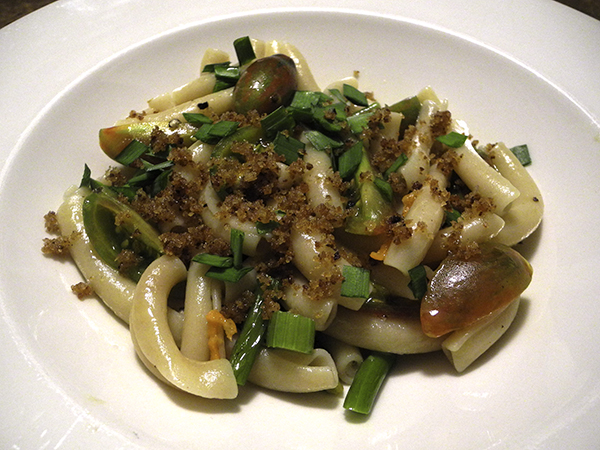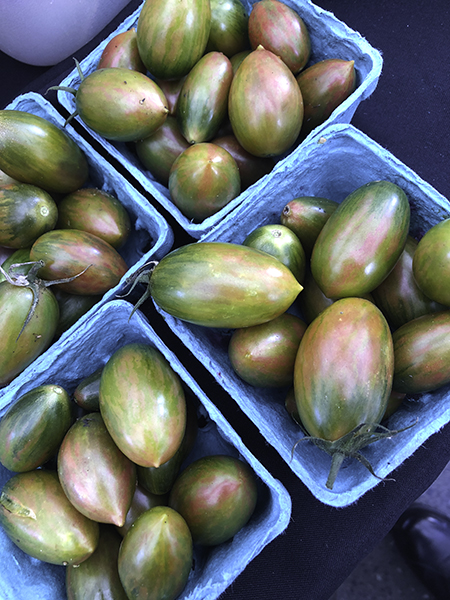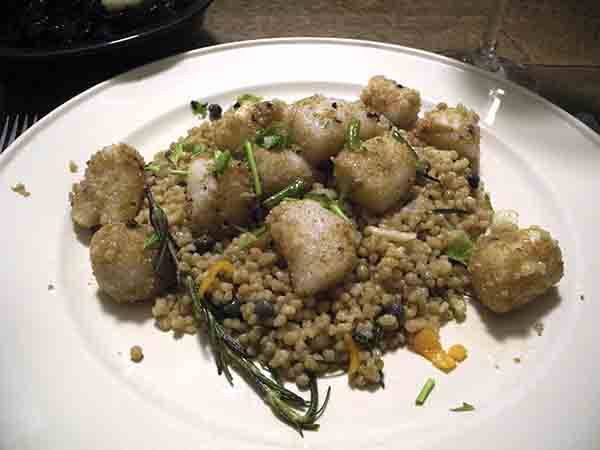
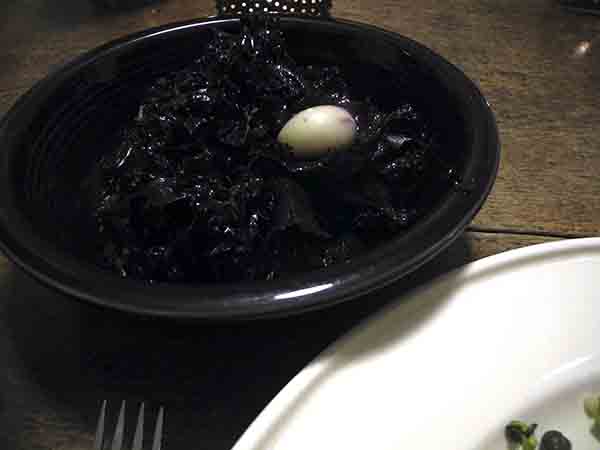
The meal was much, much more exciting than this image might suggest.
The first time I prepared this little feast the image benefited from a little more color, but this time I arranged the vegetable in separate shallow bowls (in the picture immediately above this paragraph, and at the very top left of the picture above it). I was afraid the purple juices from the braised purple kale would flood the couscous, but in the end, since there was almost no liquid remaining by the time I served the vegetable, I needn’t have worried.
- two small rosemary branches from Alewife Farm that had first been bruised with the flat side of a heavy knife added to 2 tablespoons of Organic Valley ‘Cultured Pasture Butter’ that had been melted inside a vintage medium-size heavy tin-lined copper pot, followed by 2 finely-chopped Rocambole garlic cloves from Keith’s Farm, a pinch or more of dried pepperoncino Calabresi secchi from Buon Italia and half of a fresh habanada pepper from Oak Grove Plantation, then cooked for one minute, stirring, after which one third of a cup of white wine (an inexpensive 2017 Chilean white, Choroy, a blend of Chardonnay and Sauvignon Blanc from the Maule Valley) was added and the heat increased to medium-high, the liquid simmered until it had reduced by half (2 minutes or so), then three quarters of a cup of hand-rolled Canaan, Palestine, Maftoul “Organic and Fair”, similar to Moroccan couscous, made in women-owned cooperatives in the West Bank, organic and Fair Trade, boiled earlier for 3 minutes in a few quarts of salted water and drained, stirred into the pot with 2 or 3 teaspoons of rinsed and drained salted Sicilian capers and a third of a teaspoon of sea salt, cooked for a minute or so, the rosemary branches removed (I forgot to remove them), a teaspoon of organic lemon juice from Whole Foods Market added, the couscous spread onto 2 plates, each topped with a dozen bay scallops, prepared separately as described below [I found the basic recipe here; it was created by Melissa Clark, but I’ve altered it slightly]
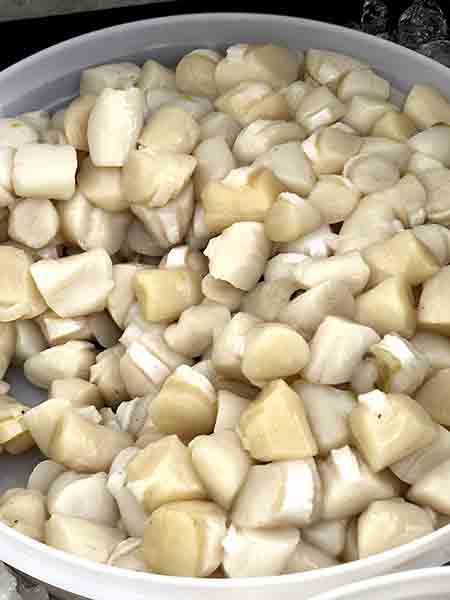
- two dozen bay scallops from Pura Vida Seafood Company, washed and patted dry, rolled in a local whole wheat flour from the Blew family of Oak Grove Mills I regularly obtain in the Union Square Greenmarket, that had been seasoned with sea salt and freshly-ground black pepper, added to a large tin-lined heavy copper skillet in which a tablespoon or so of chopped garlic scapes from Berried Treasures Farm had been briefly sautéed in a tablespoon or more of butter until pungent and slightly softened, the scallops left in the pan for about a minute and a half while being tossed about once or twice, or until they had browned lightly, then placed on top of the 2 plates of cooked maftoul and garnished with chopped lovage from Two Guys from Woodbridge [I should have added more than I did]
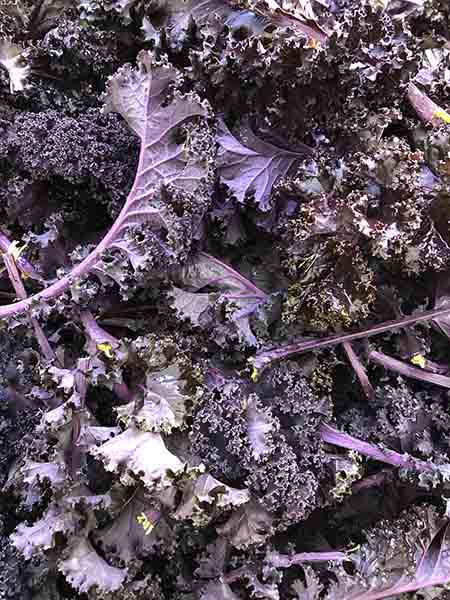
- redbor kale (or winterbor kale), finely-curled and a striking dark purple-red in color, from Alewife Farm, wilted with olive oil in which thinly-sliced rocambole garlic from Keith’s Farm had been allowed to heat until pungent, seasoned with sea salt, freshly-ground black pepper, and a drizzle of fresh olive oil [the kale barely appears at the top left of the picture at the top, inside a low black non-vintage, and non-radioactive Fiestaware bowl
- the wine was a California (Sonoma) white, Ferrari Carano Fumé Blanc (Sauvignon Blanc) 2017, from Philippe Wines
- the music was Mozart’s 1791 opera seria, ‘La Clemenza di Tito’, Yannick Nézet-Séguin conducting the Chamber Orchestra of Europe and the RIAS Kammerchor
